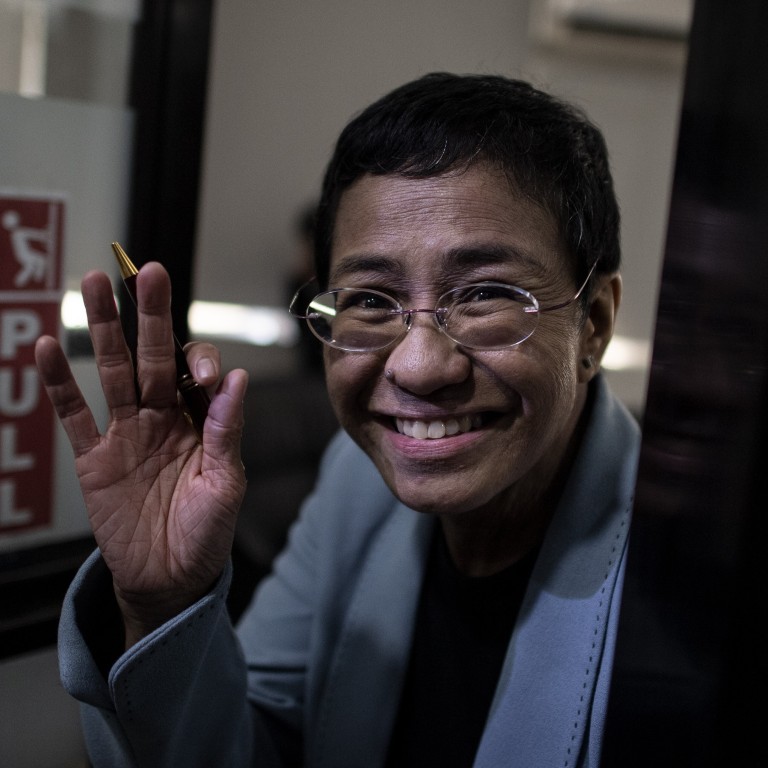
And the 2021 Nobel Prizes go to … men mostly
- Scientists of both genders decry lack of women recognised so far this year
- Since 2001, 29 women have been awarded all prizes combined
Nine winners of the ten winners of the 2021 Nobel Prizes in medicine, chemistry, physics, literature and peace were men, reigniting a recurring debate about diversity in the highly coveted awards, particularly those in science.
“Abdulrazak Gurnah meets at least one of the criterion of a writer from a non-traditional cultural circle – a non-European with a colonial background, but he’s no woman,” said Anne-Marie Morhed, head of the Swedish Association of Female Academics.
Ressa was so far the only woman to be awarded a Nobel this year. Still to come on Monday is the prize for outstanding work in the field economics, which could go to a woman.

The Norwegian Nobel Committee is led by a woman and the majority of the members are women. Ditto the previous committee: led by a woman and with a majority of women on it.
There has also been a real push in recent years to not give the prize to only white men from North America and western Europe, as was the case in the earlier decades.
In comparison to the dozen black peace laureates in the Nobel’s history, there has never been a black recipient of the prizes for medicine, chemistry and physics, points out Professor Winston Morgan, a toxicologist at the University of East London who has looked at representation in the prizes as part of his research on inequality in the sciences.
Hot sauces and hugs sparked 2021 Nobel Prize winners’ research
“In terms of the gap between the world’s population and the winners – the biggest gap is a gender one,” Morgan said. “The number of female prizewinners is really, really tiny.”
While their representation among winners has been steadily increasing in the last decades compared to the early years, women still account for about just six per cent of winners.
Since 2001, 29 women have been awarded all prizes combined, almost three times as many as in the previous two decades.
In 2009, five women received a Nobel Prize, including the first female laureate in economics, American Elinor Ostrom – a record that has yet to be equalled.

Economics has had the fewest women laureates at 2.3 per cent, lower than the science prizes combined which have seen 3.7 per cent women.
Nevertheless, the first person to win the Nobel Prize twice was Marie Curie, in 1903 in physics and in 1911 in chemistry.
Scientists of both genders have already taken to social media to decry the lack of women recognised so far this year.
GenderAvenger, a non-profit group dedicated to advancing women’s voices in public dialogue, said the prizes were “like a terrible mystery where you know the ending halfway through the book. 4 out of 6 categories announced and nary a woman in sight, @NobelPrize. Is the story of the 2021 Nobel Prize that the men did it? (Spoiler: Women are also doing amazing work)”.
Five things to know about the Nobel Prizes
Some, including Ellie Murray, an assistant professor of epidemiology at Boston University School of Public Health, expressed disappointment that this year’s awards excluded the contributions of Katalin Kariko and Kizzmekia Corbett, key scientists behind the development of mRNA vaccines that are changing the course of the pandemic.
Nobel watchers, however, said it was entirely likely that Kariko and Corbett would be recognised in years to come. The committee, they said, tended to reward recipients after a period of time.
“The issue for the Nobel Prize is it has a criteria and a tradition and it is hard for them to break away from that,” Morgan said, adding that the committee would likely respond to scientific innovation during the pandemic in three or four years.
He added that if you looked at the general trajectory of Nobel Prize winners, the number of women scientists was growing as were those given to men from Japan and China.
“We are not seeing that same trajectory for black scientists. That concerns me more,” he said. “You need to ask are there enough black scientists in universities and are they being supported.”
Asked why there were so few black Nobel Prize winners for literature, Gurnah said the world was changing.
More than 100 Nobel Prize winners accuse China of ‘bullying’
Jesper Haeggstrom, chairman of the Nobel Assembly that awarded the prize in Physiology or Medicine, said there was no simple explanation for the lack of female prizewinners, but that it reflected the representation of women in science.
“There has been an underrepresentation of women historically in science, so the further back in time you look, the fewer female candidates there are,” he said.
Haeggstrom declined to say whether gender played a role in the committee’s selection process.
“I’m not at liberty to give you any details on this, but in general terms, I can say that scientific competence is the deciding factor,” he said.
Critics, however, point to the makeup of the scientific selection committees. Only 25 per cent of the 50 professors on the medicine selection committee are women.
The Committee for Physics at the Royal Swedish Academy of Sciences consists of six members, of which one is a woman, and two co-opted members, both men. The chemistry committee consists of six members, all male, and two co-opted members, both women.
Additional reporting by Agence France-Presse

